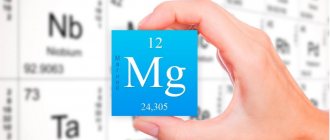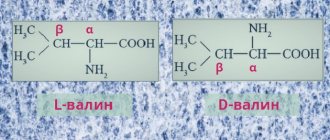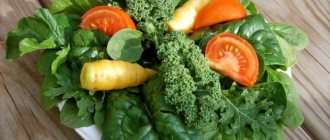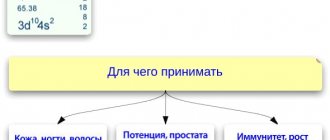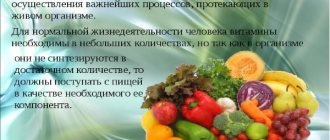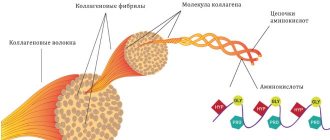Which foods contain the most protein?
Below we will talk about natural products that contain a fairly large amount of protein, which can completely fill the need for it at home.
Proteins (proteins) contained in food are divided into: complete, which contains all the amino acids needed by the human body, and incomplete, in which the amino acid profile is incomplete.
Complete proteins with properly balanced amino acids are absolutely necessary for gaining muscle mass: muscle growth is possible only if there is a sufficient presence of all amino acids in the blood.
We recommend : Proper nutrition for gaining muscle mass: 7 recommendations from experts
A deficiency of even one essential amino acid can lead to the suppression of important metabolic functions necessary for the repair or creation of tissues, including muscles.
Moreover, a deficiency of essential amino acids interferes with muscle protein synthesis (and muscle growth) in proportion to the degree of deficiency. See Symptoms of protein deficiency in the body.
Deficiency of even one essential amino acid is an obstacle to muscle growth
The best and most affordable sources of high quality, complete natural protein:
- poultry: chicken, turkey;
- eggs;
- fish;
- lean red meat: beef, lamb, veal;
- low-fat dairy products;
- legumes;
- nuts.
They will be discussed further. We will talk about the advantages and disadvantages of each of them.
Experts recommend meeting your daily protein needs primarily through natural products.
We recommend : Which protein is better: sports or natural?
Plant or animal protein?
When looking for a sports protein alternative at home, it is important to understand the difference between plant and animal proteins.
Animal and plant protein differ:
- protein quality : animal protein almost always has a complete amino acid composition;
- degree of absorption : animal proteins are generally better absorbed;
- protein content per unit mass : the concentration of protein per 100 g in animal products is significantly higher than in plant products;
- degree of benefit or harm to health : our analysis of numerous scientific studies shows greater potential harm from consuming animal proteins compared to plant proteins, including as a factor in the development of cancer.
All animal proteins are complete in amino acid composition. This means that they contain all the amino acids the body needs.
But.
Animal products are characterized by high fat content, primarily due to saturated fats - the same ones that contain cholesterol and are responsible for the development of obesity and cardiovascular diseases.
However, the vast majority of athletes “build or built themselves” exclusively on animal protein.
This applies to such stars as Arnold Schwarzenegger, and Phil Heath, and Evan Centopani, etc.
They all note that meat and other animal products are very effective in building muscle mass.
Share with us your experience of losing weight or gaining muscle mass!
To avoid harm from saturated fats, it is recommended to choose lean types of meat (poultry and fish), lean parts of the carcass and low-fat dairy products, as well as prepare them using dietary methods (boiling, stewing, baking).
Animal protein contains all the amino acids we need in an optimal combination, but often animal products have a high fat content
The main sources of plant protein are legumes (soybeans, beans, peas, lentils), nuts (almonds, walnuts, cashews, hazelnuts, etc.) and seeds (sunflower, pumpkin, etc.).
A distinctive feature of legumes is their almost complete absence of fat and high content of protein, vitamins and minerals (iron, folic acid, potassium, magnesium), fiber and biologically active compounds.
Nuts, unlike legumes, have a higher fat content, but their vegetable fats are healthy.
Most plant proteins are incomplete in amino acid composition . This means that one or more amino acids may be absent or present in very small quantities.
The only exception is soy.
For example, 100 g of beans contains 15 g of protein. But it lacks the essential amino acid methionine, known for its anabolic properties.
For this reason, there are few vegetarians among bodybuilders.
Most legumes contain incomplete protein, the exception is soy.
Similarly, vegetable protein from grains (rice, buckwheat, corn, oatmeal, etc.) is usually devoid of some essential amino acids, in particular lysine.
In general, plant protein has less biological value than animal protein . Precisely because of the inferior amino acid composition and lower degree of absorption.
But.
A combination of several plant products with an unbalanced amino acid composition results in a complete protein . This is very important to understand for vegetarians.
Complete plant protein can be obtained by combining several plant foods
The figure below shows a diagram of combining plant foods (and dairy) to obtain complete protein. Follow it when planning your diet at home.
If you think what we do is important, support our project!
YES!
Plant protein has an important advantage over animal protein : it is less harmful to health, including when consumed regularly in high doses.
According to our research on the harms of protein, consuming large quantities of animal protein increases the risk of kidney stones, leads to decreased bone density, and also increases the risk of cancer.
This last point is one of the most significant scientific discoveries of our time and is supported by numerous scientific studies, the most convincing of which is the “China Study” by Dr. Colin Campbell, who carried out the largest study in the history of science on the relationship between protein intake and cancer risk.
| Combinations of plant products with a complete amino acid composition | |
| Black Eyed Peas | Almond |
| Chickpeas | Brown rice |
| Green pea | Couscous |
| Beans | Bread |
| Beans | Rice |
| Lentils | Corn |
| Peanut | Sesame seeds |
| White beans | Pasta |
We recommend : How to take protein for muscle growth?
Can I replace a protein shake with baby food?
Many novice athletes, trying to find alternative options to whey protein, pay attention to products such as powdered milk and infant formula. Essentially, any whey protein is milk powder that has been purified from fats and carbohydrates. Athletes are not advised to use such a product for sports purposes. Since the protein content in milk powder is significantly lower, and there is quite a lot of saturated fat.
Due to the high lactose content, such a product, if used regularly, can cause problems with the digestive system.
About protein supplements in sports nutrition >>
Other recommendations concern nutrition for babies and the answer to the question of whether protein can be replaced with baby food. The composition of special mixtures is radically different from powdered milk. They are not only thoroughly cleaned of impurities, but also enriched with vitamins and microelements. A significant disadvantage of this method of obtaining protein from baby food is the high cost of the product. In terms of the amount of protein obtained, the cost can be several times higher than the price of whey protein.
Experts advise that if you have a problem of intolerance to dairy products, look not at baby food, but at whey protein from plant raw materials in the form of soy or peas.
Dairy and eggs
Dairy products and eggs are an almost perfect protein replacement at home.
Milk is rich in complete protein and is a source of high-quality natural protein .
The advantages of dairy products are that they are ready to eat immediately after purchase, and are also presented in a wide variety on store shelves (for every taste and color).
Milk contains all the necessary nutrients for growth, as well as a large number of vitamins (A, C, B1, B2, B12 - critical for vegetarians, as it is not found in plant foods) and minerals (potassium, phosphorus, sodium, potassium).
Milk protein has a very high degree of absorption. 100 g of milk contains an average of 3.2 g of protein and 67 kcal.
Dairy products are an almost ideal source of natural protein
Milk is 87% water and 13% solids. The dry residue includes ~37% lactose, ~30% fat (2/3 of which is saturated) and ~27% protein. Milk protein is 80% casein and 20% whey protein.
Unlike meat and fish, which will be discussed below, milk accumulates fewer toxins and heavy metals, since it is a short-term product, produced in the cow's body and removed from there very quickly.
Another problem characteristic of products of this class - the content of nitrates and antibiotics - is largely individual in nature and is determined by the integrity of the manufacturer. See scientific research on the benefits and harms of milk, as well as expert reviews.
For athletes looking for a protein replacement, it is better to choose low-fat dairy products.
Read us on the networks
We recommend : Types of protein
| Nutritional value of milk (per 100 grams) | |
| Protein | 3.2 g |
| Fat | 4.1 g |
| Carbohydrates | 4.4 g |
| Calorie content | 67 kcal |
| Calcium | 120 mg |
| Phosphorus | 90 mg |
| Iron | 0.2 mg |
| B1 | 0.05 mg |
| B2 | 0.19 mg |
| B12 | 0.14 mcg |
| WITH | 2 mg |
1 Greek yogurt
Protein Amount: 7 g per 100 g serving
Greek yogurt is an excellent alternative to sports protein. It contains twice the protein of regular yogurt and milk, tastes great, and contains virtually no sugar or fillers.
What also makes Greek yogurt appealing is its high content of probiotics, which improve digestion, and calcium, which strengthens bones.
Advice:
The fat content of Greek yogurt varies among different manufacturers; give preference to low-fat types (~2%).
2 Cottage cheese
Protein Amount: 16 g per 100 g serving
Cottage cheese is a natural product containing large quantities of the “slow” protein casein - a high-quality milk protein with a complete amino acid composition. It is an excellent replacement for sports casein, which is usually recommended to be consumed before bed or as a meal replacement.
A standard 200 g serving of cottage cheese contains the same amount of protein as a serving of a high-quality protein shake.
Advice:
Cottage cheese has different fat content. It is better to choose one that has a low fat percentage of 2-5%. A complete absence of fat (0%) as well as too much of it (more than 12%) are undesirable, as they violate the ideal ratio of nutrients.
We recommend : Cottage cheese in bodybuilding: benefits for gaining muscle mass, losing weight, but NOT for drying
We recommend : Casein or Cottage Cheese? When is the best time to eat cottage cheese for weight loss and muscle gain? Is it possible for the night?
3 Swiss cheese
Protein Amount: 28 g per 100 g serving
Swiss cheese contains more protein than most other commercially available varieties.
Advice:
To avoid consuming too many calories and saturated fat, choose lean varieties that have the highest protein-to-fat ratio.
4 eggs
Amount of protein: 6 g per 1 large egg
Eggs are a near-ideal muscle-building food because their biological value (a measure of how much protein is absorbed) is higher than any other food in the store. The biological value is largely determined by the amount of essential amino acids in which the product is rich, and there are a lot of them in an ordinary egg.
Advice:
Whenever possible, choose eggs fortified with Omega-3s to further enhance their benefits.
We recommend : Sports nutrition Omega-3 (fish oil): why are they useful in bodybuilding and fitness, how to take it, what is better “sports omega-3” or drugs from the pharmacy?
We recommend: Cholesterol in chicken eggs: how many eggs can an adult eat per day?
5 Milk, 2%
Protein Amount: 8 g per 1 glass
Milk protein is a source of first-class protein, the biological value of which is slightly less than that of egg protein.
2% fat content should not be a concern because... a small percentage of fat is necessary for the absorption of fat-soluble vitamins, such as vitamin D, for example, and cholesterol is necessary for the production of testosterone in the body (!).
Advice:
Scientists say that the milk of cows kept in natural free-range conditions (like in a village) is much more healthy and rich in nutrients (in particular omega-3) than that obtained from animals kept in static farm conditions.
6 Whey protein
Amount of protein: 24 g per 1 medium spoon approximately 30 g
(Yes, this is not a whole natural product, but added for completeness.)
Whey protein is one of the most popular bodybuilding fast-digesting proteins on the market. It has a huge number of benefits for both gaining muscle mass and losing weight.
Whey protein is low in calories and is quickly absorbed, inheriting most of the beneficial properties of whole milk. It is ideal as a “no-cook” source of protein, especially useful when cooking time is short.
Advice:
Whey protein is a strong anabolic (muscle growth stimulator), because... rich in branched chain amino acids BCAA.
We recommend : Whey protein hydrolyzate in bodybuilding: reviews from scientists, how effective it is for gaining weight, how best to take it
We recommend : Soy or whey protein? Advantages and disadvantages
Three popular protein shake formulations
All products must be whipped until smooth using a blender. One meal should contain 25-30 g of protein, however, this figure is selected taking into account individual characteristics, such as body weight.
- Cottage cheese – 100 g, glass of milk, banana, 1 tbsp. l. honey, 2 tbsp. l. oatmeal.
- One egg, a spoonful of honey, a glass of kefir, a handful of walnuts.
- 200 g cottage cheese, 5 egg whites, a spoonful of honey, banana, berries to taste (a handful).
When trying to make homemade protein, you need to adhere to the basic principles of nutrition for muscle development. Muscles can also develop with the help of a balanced diet, which includes commonly available foods, and not just sports protein.
And most importantly, do not forget about intense training. Without them, it is impossible to lose weight and develop good muscles.
Red meat
Meat is the preferred at-home protein alternative for many athletes.
Lean red meat has a number of advantages over white dietary meat (chicken, turkey and fish).
In addition to high-quality protein, it is a source of B vitamins, iron and zinc, as well as creatine, a natural stimulator of muscle growth.
Some pros say that red meat is more effective for gaining muscle mass than white meat (chicken, fish) and other natural foods rich in protein. Pro bodybuilder Phil Heath, in particular, talks about the benefits of red meat for gaining weight.
Among the disadvantages - it requires cooking, has a high fat content (unnecessary calories + cholesterol + saturated fats that are not very healthy), and takes a long time to digest. (We don’t touch on the controversial ethical issues of consuming the bodies of dead animals ;))
A general recommendation for meat dishes is to choose lean parts of the animal carcass for consumption (they are always available), and when cooking at home, use dietary methods (baking, boiling), without adding extra calories in the form of oil and fat.
7 Beef
Protein Amount: 27 g per 100 g serving
Beef is different from beef. Beef protein is one of the best among natural ones. But it is important to understand that the percentage of fat in beef meat differs in different parts of the animal’s body.
Lean meat from the hindquarters (leg) provides 1 gram of beef protein for every 7 calories; and meat from the back of the animal
provides 1 g of protein for every 11 calories. In the first case, beef meat has lower calorie and fat content, and, as a rule, costs less.
Advice:
When cooking beef at home, fry it quickly over high heat until medium rare, as it gets dry very quickly. When choosing meat in the store, give preference to those brands whose packaging clearly states that it does not contain nitrites and nitrates, the high consumption of which causes some types of cancer.
We recommend : Protein and cancer: Animal protein is one of the main causes of cancer. Interview with a leading expert
8 Low-fat minced meat (5% fat)
Protein Amount: 21 g per 100 g serving
Ground beef is also a good protein alternative at home. Fat content of 5% is optimal to ensure taste.
Advice:
Whenever possible, choose pasture-raised (grandmother's) ground beef rather than farm-raised beef. It contains more nutrients and appears to be lower in hormonal growth promoters and antibiotics.
We recommend : Creatine in bodybuilding: what is it and what is it for | Scientific facts
9 Pork
Protein amount
:
30 g per 100 g serving
Pork is a very popular food product in Russia, Ukraine and Belarus. It is really rich in protein, as well as fat and cholesterol. This is far from a dietary product. The latter circumstance, multiplied by its popularity, has made it the main cause of the epidemic of cardiovascular diseases in the world, from which the lion's share of all humanity dies.
Tip: If you decide to use pork as a protein replacement, choose lean parts, as well as dietary cooking methods that reduce fat.
The difference between regular food and protein shakes
Protein shakes are a protein concentrate in dry form, which is diluted with water or other liquid and becomes suitable for consumption. The protein shake may also contain other components; this can be found in the product description.
Using protein shakes as protein meal replacements has a number of advantages:
- the ability to quickly get a large portion of protein after training without overloading the stomach;
- there is no need to dramatically change your diet;
- Possibility of use for weight loss;
- improvement of protein metabolism in the body, including the production of blood cells;
- increased testosterone production in men.
However, this benefit is only relevant if cocktails are used correctly and do not contain harmful additives such as sweeteners, flavors and others.
Using cocktails can also be harmful:
- excess protein puts stress on the liver and kidneys, undermining their health;
- if there is excess, excessive weight gain is possible;
- a high concentration of protein can lead to flatulence, constipation or diarrhea;
- an allergic reaction to substances included in the cocktail is possible.
The principle of measure is important here. Before you start drinking a cocktail or its analogue, you need to familiarize yourself with its composition and choose one with a minimum of additives, especially artificial ones. It should be consumed within normal limits, without abuse. And at the first sign of an allergy, stop immediately.
Domestic bird
Poultry is an excellent source of dietary protein. Poultry meat is often the most important natural product in the diet of professional bodybuilders.
To get the most benefit from eating it, choose lean parts and limit the use of oil when cooking.
10 Chicken breast (boneless and skinless)
Protein Amount: 28 g per 100 g serving
This is one of the most favorite natural protein-rich foods among bodybuilders. Chicken breast contains more protein than other poultry meats. In addition, it is non-greasy.
Advice:
Here, too, ideally it is better to give preference to chicken that was raised in natural conditions, rather than broilers, the meat of which contains more fat and fewer beneficial microelements.
11 Turkey breast
Protein Amount: 28 g per 100 g serving
Like chicken, turkey meat is a wonderful food product that contains large amounts of dietary protein. Turkey breast is also an excellent source of iron, zinc, phosphorus, potassium and vitamin B.
Advice:
As with other poultry, beware of meat raised with antibiotics. Resist the temptation to buy flavored turkey meats and other sausages that are loaded with unnecessary salt, sugar, and artificial flavors (take a peek at the sausage's ingredients the next time you visit the store).
Protein Replacement: Bottom Line
In general, protein is a more tailored protein mixture for athletes, containing less fat. Of course, you can buy yourself expensive sports nutrition. But ultimately, the result depends on hard training, lifestyle and diet. And even the cheapest of them can work for results. But in addition to protein, you need to take vitamins and amino acids.
Do you want to gain weight through muscle mass? In this case, you need to consume as much protein as possible. Unfortunately, not everyone has the opportunity to increase the amount of protein through daily nutrition. In such cases, sports supplements come to the rescue, for example, gainers and protein. The latter is preferable for those who want to “gain” muscle, without fat tissue. Prices for high-quality sports supplements today are very, very high. That is why many are interested in the question, is it possible to replace it with something or not?
Fish
Fish is another protein-rich food that is easy to prepare at home. Fish protein is in no way inferior in quality to meat protein.
Unlike meat, fish (especially fatty fish) is rich in healthy omega-3 unsaturated fats, it has virtually no cholesterol, a lot of iodine (in marine species), and is easier to digest and cook.
The disadvantages are that:
- when delivering it, storage conditions are more often violated , and often even in large supermarkets, analysis of labels reveals non-compliance with sales deadlines;
- scientists talk about the high level of contamination of fish and seafood with mercury and other chemical toxins, the content of parasites, antibiotics, etc.
As is the case with all natural products, the source of which is the muscles of once running animals, give preference to those types of fish that live in natural seas/rivers/oceans, rather than artificial farms, and also that feed on plant foods rather than other animals, since in this case the meat accumulates fewer toxins.
Fish is rich in high-quality protein, but during its delivery storage conditions are often violated
We recommend : The benefits and harms of fish for human health: the result of an analysis of more than 40 scientific studies
12 Tuna
Protein Amount: 30 g per 100 g serving
Tuna is a meaty fish rich in easily digestible and high-quality protein, as well as B vitamins and the powerful antioxidant selenium.
Tip : give preference to tuna caught in natural wild conditions
13 Halibut
Protein Amount: 27 g per 100 g serving
Of all white meats, halibut contains the most protein needed for muscle building. It has a very low percentage of fat, which makes it an ideal dietary source of protein. It is also high in vitamins B6 and B12, magnesium, potassium, niacin, phosphorus and selenium.
It is important to know:
Pacific halibut is considered to be environmentally superior to Atlantic halibut.
14 Red salmon
Protein Amount: 27 g per 100 g serving
Wild salmon not only tastes better, but it also contains 25% more protein than its farmed counterpart. It is also rich in omega-3 fatty acids, which are beneficial for health and weight loss.
Recommended : How effective are Omega-3s for weight loss? Scientific research
Advice:
When purchasing, choose fish whose skin is not damaged: it has better taste. Recently, numerous evidence indicates the high degree of contamination of farmed salmon species (in Norway), as well as the use of dyes to improve the presentation. When purchasing, if possible, find out where the catch comes from.
15 Tilapia
Protein Amount: 25 g per 100 g serving
Tilapia is a freshwater fish that is found primarily in rivers in tropical areas. Today it is sold in most fish markets.
It is a good source of protein and contains a relatively low percentage of saturated fat, carbohydrates and sodium, and does not accumulate heavy metals as it grows quickly and has a short lifespan. Among the microelements it contains are phosphorus, vitamins B12 and B3, selenium, and potassium.
Advice:
Beware of tilapia species from the Asian region.
16 Fish roe
Protein Amount: 24 g per 100 g serving
Fish caviar is a product rich in nutrients. It contains quite a lot of vitamins A, D and B4 (choline), as well as omega-3 fatty acids.
Both red and black caviar are a good natural source of protein: a teaspoon (16 g) contains approximately 4 g of protein.
What is protein for?
Protein or proteins (Greek protos - first, most important) is an organic building material that forms the cells of our body, participates in the process of assimilation of fats, carbohydrates, vitamins, minerals, is responsible for immunity and much more. In other words, it participates in every process that occurs within us. There are about 5 million different proteins in the human body, and they make up 15-20% of the mass of body tissue.
Proteins of any origin are composed of amino acids: 13 of them are successfully produced by the body without the participation of any substances coming from the outside, and are called non-essential. And we can get 10 other amino acids only from food: histidine, leucine, isoleucine, tryptophan, methionine, lysine, phenylalanine, arginine, threonine, valine. If the body does not receive these amino acids in sufficient quantities, then its functioning will begin to malfunction.
Canned foods
17 Anchovies
Protein Amount: 28 g per 100 g serving
Typically brined and used as a relish (or topping for olives), this small fish is ideal as a canned protein replacement.
Because of its size, it does not accumulate toxins like most larger fish.
Anchovies are healthy because they contain omega-3 polyunsaturated fatty acids, which have a beneficial effect on cholesterol levels and heart health.
Advice:
To reduce the saltiness of anchovies, place them in water for 30 minutes and then drain.
18 Canned tuna
Protein Amount: 26 g per 100 g serving
Canned tuna is just as good a source of protein at home and on the go as raw tuna.
Advice:
To avoid extra calories from vegetable oils, choose canned foods made with water rather than oil.
19 Canned chicken meat
Protein Amount: 25 g per 100 g serving
Canned chicken is an excellent source of high-quality protein for sandwiches and salads.
It is important to know:
When purchasing meat, choose canned meat with minimal sodium content.
20 Canned sardines
Protein Amount: 25 g per 100 g serving
Canned sardines are often overlooked as not only are they an excellent source of protein, but they are also extremely rich in omega-3 fatty acids and vitamin D.
Research shows that vitamin D is necessary for the synthesis of testosterone in the body. Sardines are easily digestible by the body and contain large amounts of phosphorus, iodine, calcium, potassium, sodium, magnesium, zinc, and fluorine.
21 Canned beans
Amount of protein: 20 g per 1 glass
Beans are a fantastically cheap source of protein, and by far the best of all canned legumes. Beans are rich in amino acids, minerals and vitamins B1, B2, B4, B5, B6, as well as fiber.
Cheesecakes with protein
Cheesecakes are a delicious dish that almost everyone has loved since childhood. But many people who care about their figure refuse it due to its high calorie content. Should not be doing that. There is a delicious recipe for cheesecakes with protein without flour. They will fill the body with energy, make up for the lack of protein, and all this without harming the figure.
Ingredients:
- 0.5 kg low-fat cottage cheese;
- 60 g of MULTI PROTEIN protein mixture;
- 50 ml skim milk 0.5%;
- 290 g pumpkin pulp;
- 2 egg whites;
- 1 teaspoon baking powder.
Cooking method:
Place all ingredients except pumpkin and 2 egg whites into a container for preparing the dough, mix them until smooth. Separately, beat the whites with a pinch of salt until a stable foam forms, grate the pumpkin on a coarse grater. Then pour the protein foam into the rest of the mixture, mix gently with a fork, lastly add the pumpkin and mix again. Spoon the resulting mixture into a heated frying pan, forming small cakes. Fry on both sides. The dish is ready. As you can see, the recipe for cottage cheese pancakes with protein is very simple, but the dish turns out incredibly tasty, low-fat and high in protein.
Nuts, grains and legumes
It's no secret that plant products are significantly inferior in protein content to animal products. The relative proportion of protein in them is very low, and what is even more unpleasant is that it is often incomplete and does not contain all the necessary amino acids.
Below we provide a list of some of the most protein-rich plant foods that are good options for supplementing your diet with protein.
22 Soy
Protein amount: 36 g per 100 g beans
Soy is a true plant protein monster. This is an amazing product, the protein of which is almost as good as that of dairy and meat products. It contains all amino acids in close to ideal ratios.
Soy protein is the most common source of plant protein. The peoples of East Asia have consumed soybeans for over 2,000 years. In Western countries, soybeans and derivative products only began to gain popularity in the 1960s as a source of high-quality plant protein for vegetarians.
Today, soybeans are used to produce a wide range of food products, including tofu, soy flour, soy nuts, soy milk, soy beans, soy “meat,” hamburgers, soy sausages and sausages. All these products are a plant-based alternative to animal-based similar products (cheese and milk, meat, meat hamburgers, meat sausages and sausages).
The main advantage of soy compared to meat is its very low (close to zero) cholesterol content . Scientific research suggests that those people (and athletes) who replace meat proteins in their diet with soy proteins experience a significant decrease in the level of harmful cholesterol in the blood and, at the same time, the level of healthy cholesterol remains unchanged.
Pure soybeans are quite difficult to cook at home; they require a very long cooking time.
It is difficult to recommend soy to athletes as a protein replacement at home, since, in addition to high-quality protein, it contains biologically active substances, which, according to some scientific data, have an extremely negative effect on human health (cause demineralization of bones, affect hormonal balance). See our material about the dangers of soy.
One of these substances are the so-called isoflavones. The scientific literature is filled with conflicting opinions regarding their benefits and harms.
Some scientists argue that isoflavones play the role of antioxidants and help reduce the risk of cancer, atherosclerosis (a condition when cholesterol harmful to the body is deposited on the walls of blood vessels, narrowing the lumen), and are also important for maintaining the mineral composition of bones and lumbar vertebrae, preventing the development of osteoporosis ( especially important for older people).
Others, on the contrary, blame isoflavones for these and many other health problems. This issue is discussed in detail in the material on the dangers and benefits of soy and the dubious benefits of phytoestrogens for women's health.
It's obvious that someone is lying

